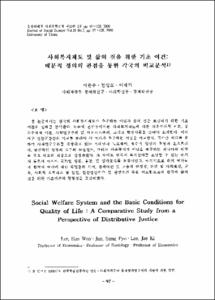重義性의 諸樣相과 檢證法에 관한 小考
- Alternative Title
- A Study on Some Aspects of Ambiguity and Its Tests
- Abstract
- 인간이 가진 言語能力을 판단하는 하나의 尺度로 중의성이 있는데, 이는 여러 측면에서 발생할 수 있는 언어현상이다. 순수 언어적인 측면에서 중의성은 音聲的, 語彙的, 文法的 중의성의 세가지 形態가 있다. 그러나 최근의 언어이론이 論理學과 言語哲學을 도입하고, 동시에 話用的 機能과 인간의 심리적 認識過程까지도 기술하려 함에 따라 중의성은 더욱 복잡한 양상을 띄게 되었다.
本考에서는 우선 발생원인에 따른 중의성의 諸類型을 문제점과 더불어 고찰하고, 다음으로 模糊性과의 성격을 규명해 주는 중의성 諸檢證法을 의미와 통사의 두 가지 측면에서 검토하며, 끝으로 音調나 언어적 文脈등에 의한 중의성 해소방안등을 살펴보려 했다.
그 연구 결과를 간단히 要約하면, i) 발생 원인별 중의성의 諸類型들 가운데는 언어 사용자의 言語(또는 遂行)能力의 부족이나 發話의 특별 文脈과 관련되어 발생하는 言語一外的인 重義性이 설정·포함되어야 함을 볼 수 있었고, ii) 중의성과 모호성을 구분시켜 주는 검증법중 'do-so' test의 交又解釋과 관련된 학자들 간의 심한 의견차이는 중의성의 定義 및 언어 直觀上의 차이가 주요한 원인이 되겠으나, 부분적으로는 'do-so' test 그 자체와 '중의성과 모호성이란 두 언어현상은 자연언어가 그 特定事項을 省略한데서 共히 비롯되고 있다'는 사실에서도 기인함을 볼 수 있다.
Ambiguity, one of the barometers of judging one's linguistic competence, is a linguistic condition which can arise in a variety of ways. From a purely linguistic point to view there are three main types of ambiguity; phonetic, lexical, and grammatical. However, from the tendencies in present-day linguistic theory that attempts not merely to introduce logic and linguistic philosophy but to describle the pragmatic function and even the mental process arise far more complex types of ambiguity.
In chapter Ⅱ, a study on some types of ambiguity based on its sources is carried out with brief comments on some problems. In chapter Ⅲ, a number of tests used by linguists to distinguish ambiguity from vagueness are described and illustrated, with brief critical commentary. The tests appeal to semantic and syntactic principles. Special attention is given to tests using transformations whose applicability depends upon identity of sense. Besides, in chapter Ⅳ, an attempt to resolve ambiguity is made on the basis of intonation patterns and (linguistic) contexs including word order, punctuation, underlining, contraction, coindexing, etc..
The results shown in this paper could be summarized as follows. Among the types of ambiguity based on its causes must be included another type of ambiguity, classified as non-linguistic ambiguity that is introduced into utterence-signals by deficiencies in the language-user's competence and performance, or by the particular contexts of utterences. Although the 'do-so' test has been much used to judge cases for which other tests for ambiguity are inapplicable, it seems to involve many problems in deciding the crossed readings. In my opinion, such problems are due chiefly to the definition of ambiguity and the linguistic intuition of each speaker, but partially to the 'do-so' test itself and the common nature of ambiguity and vagueness.
Ambiguity, one of the barometers of judging one's linguistic competence, is a linguistic condition which can arise in a variety of ways. From a purely linguistic point to view there are three main types of ambiguity; phonetic, lexical, and grammatical. However, from the tendencies in present-day linguistic theory that attempts not merely to introduce logic and linguistic philosophy but to describle the pragmatic function and even the mental process arise far more complex types of ambiguity.
In chapter Ⅱ, a study on some types of ambiguity based on its sources is carried out with brief comments on some problems. In chapter Ⅲ, a number of tests used by linguists to distinguish ambiguity from vagueness are described and illustrated, with brief critical commentary. The tests appeal to semantic and syntactic principles. Special attention is given to tests using transformations whose applicability depends upon identity of sense. Besides, in chapter Ⅳ, an attempt to resolve ambiguity is made on the basis of intonation patterns and (linguistic) contexs including word order, punctuation, underlining, contraction, coindexing, etc..
The results shown in this paper could be summarized as follows. Among the types of ambiguity based on its causes must be included another type of ambiguity, classified as non-linguistic ambiguity that is introduced into utterence-signals by deficiencies in the language-user's competence and performance, or by the particular contexts of utterences. Although the 'do-so' test has been much used to judge cases for which other tests for ambiguity are inapplicable, it seems to involve many problems in deciding the crossed readings. In my opinion, such problems are due chiefly to the definition of ambiguity and the linguistic intuition of each speaker, but partially to the 'do-so' test itself and the common nature of ambiguity and vagueness.
- Issued Date
- 1986
- Type
- Research Laboratory
- Alternative Author(s)
- Koo, Ja-Eun
- Publisher
- 연구논문집
- Language
- kor
- Rights
- 울산대학교 저작물은 저작권에 의해 보호받습니다.
- Citation Volume
- 17
- Citation Number
- 1
- Citation Start Page
- 257
- Citation End Page
- 275
- Appears in Collections:
- Research Laboratory > University of Ulsan Report
- 파일 목록
-
-
Download
 000002024256.pdf
기타 데이터 / 2.78 MB / Adobe PDF
000002024256.pdf
기타 데이터 / 2.78 MB / Adobe PDF
-
Items in Repository are protected by copyright, with all rights reserved, unless otherwise indicated.